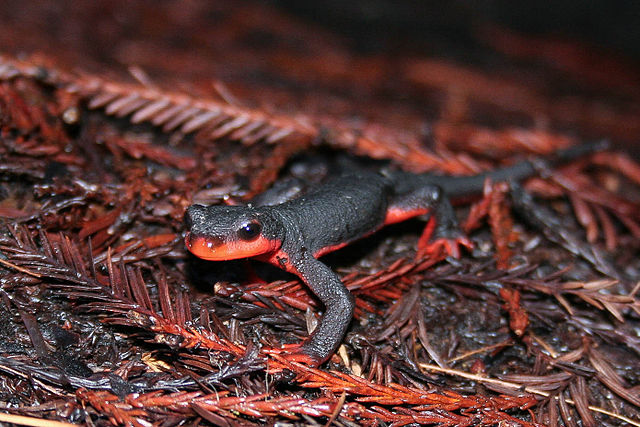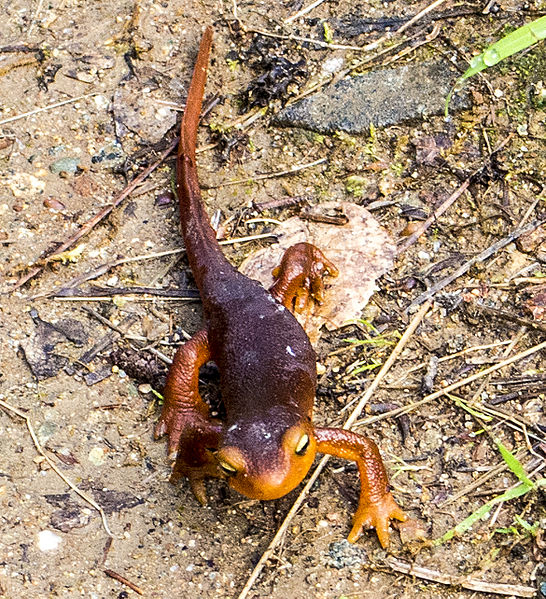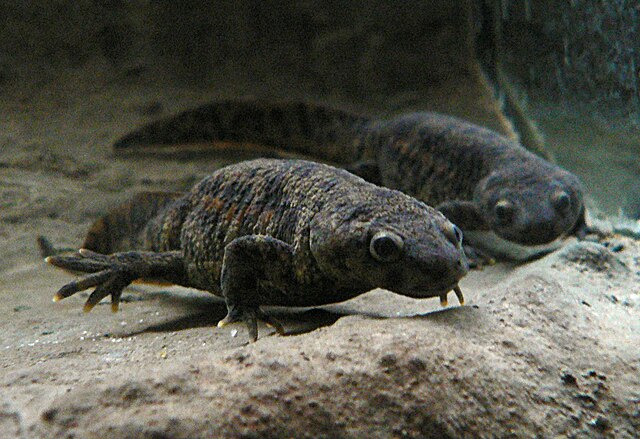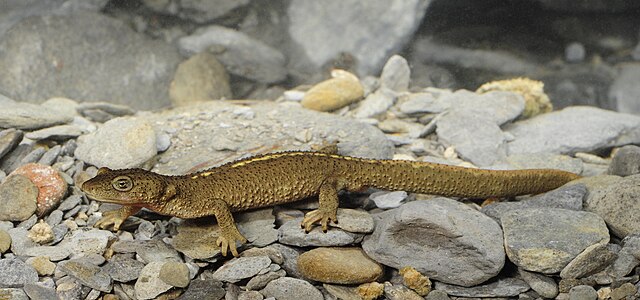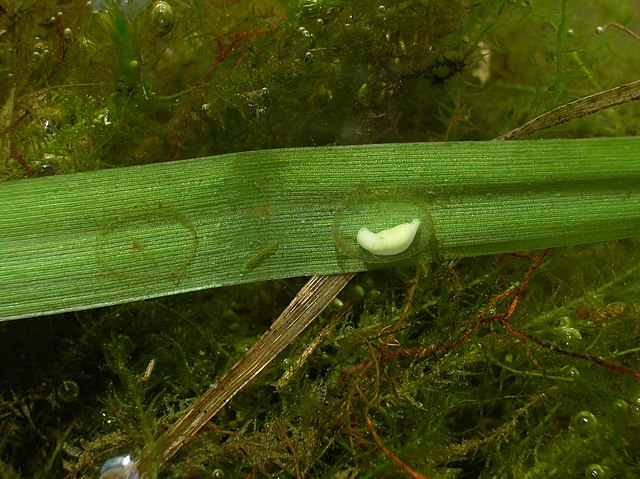The genus Taricha consists of four species of highly toxic newts in the family Salamandridae. Their common name is Pacific newts, sometimes also western newts or roughskin newts. The four species within this genus are the California newt, the rough-skinned newt, the red-bellied newt, and the sierra newt, all of which are found on the Pacific coastal region from southern Alaska to southern California, with one species possibly ranging into northern Baja California, Mexico.
Taricha
Image: Roughed Skinned Newt (16744025149)
Image: Red Bellied Newt (Taricha rivularis)
Image: Sierra Newt, Taricha sierrae (8614529800)
A newt is a salamander in the subfamily Pleurodelinae. The terrestrial juvenile phase is called an eft. Unlike other members of the family Salamandridae, newts are semiaquatic, alternating between aquatic and terrestrial habitats. Not all aquatic salamanders are considered newts, however. More than 100 known species of newts are found in North America, Europe, North Africa and Asia. Newts metamorphose through three distinct developmental life stages: aquatic larva, terrestrial juvenile (eft), and adult. Adult newts have lizard-like bodies and return to the water every year to breed, otherwise living in humid, cover-rich land habitats.
Newt
Pleurodeles, including the Iberian ribbed newt, is the type genus of subfamily Pleurodelinae.
The Pyrenean brook newt lives in small streams in the Pyrenees mountains.
Embryo in jelly capsule



